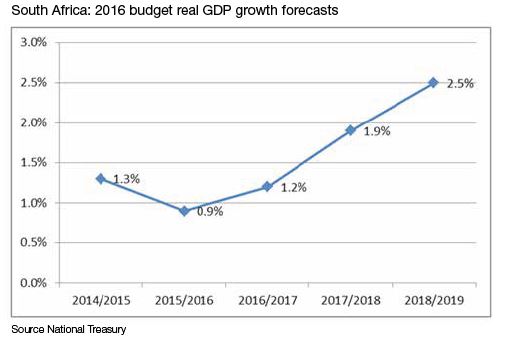Fiscal Policy and Development
The Reserve Bank has two main functions: to ensure the soundness of the financial system and to affect macroeconomic conditions through the setting of short term interest rates in order to meet an inflation target set by the Treasury. Exercising these functions is technically complex, but the economic consequence of them is expressed in a single variable: the repo rate.
It is otherwise with fiscal policy. Fiscal policy affects development in three ways. First, it determines the flow of funds through the arteries, veins and capillaries of the public financial system. Some parts of it grow, some parts remain static and some parts decline. Secondly, the tax and government expenditure transforms the market determined distribution of income into a distribution post taxes and expenditure. Thirdly, fiscal policy also affects macroeconomic outcomes, principally through the size of the budget deficit.
The first function can be illustrated by way of an example. Health policy emphasises the importance of primary health care, so the public financial question comes down to the proportion of the health budget spent on it. Since the provision of publicly supported primary health care is the responsibility of the provinces, one has to consider consolidated national and provincial expenditure.
In fact, the greater part of the national health budget consists of transfers, via several conditional grants, to the provinces. Provinces also receive an equitable share of national revenue, and are able to decide which portion of the equitable share is allocated to health. Moreover, provinces also receive revenue from users of its health services. Outcomes depend on all these factors.
In constant 2015/16 prices primary health care (all district health expenditure except administration, coroner services and district hospitals) rose from R594 per capita in 2011/12 to R709 in 2015/16. The 2016/17 Medium Term Expenditure Framework projects per capita spending to remain at this level until 2018/19. Primary health care is protected in the Medium Term Expenditure Framework (MTEF), but there is no room to increase real per capita resources allocated to it for three years.
This delays the Department of Health’s key objective of consolidating and improving primary healthcare (PHC), as preparation for National Health Insurance. Expenditure on HIV/AIDS imposes a heavy toll on primary health care. It accounted for 35% of the median province’s PHC spending in 2015/16. It is getting heavier. Despite a constant real per capita expenditure on PHC in the next three years, the conditional grant to cover HIV/AIDS and tuberculosis is projected to rise from R249 to R286, crowding out expenditure on other conditions.
In a 2014 study1, the World Bank found that the South African tax system is slightly progressive and spending is highly progressive. The rich in South Africa bear the brunt of taxes, and the government effectively redirects these tax resources to the poorest in society to raise their incomes. But the fiscal space to spend more to achieve even greater redistribution is extremely limited.To reduce poverty through the fiscal system more inclusive growth, and more efficient public service are required. Yet real per capita income is likely to grow at an average rate of 0.8% over the next three years.
Moreover, the Medium Term Expenditure Framework forming part of the 2016 Budget raises some questions about the sustainability of its projections.
Government employees
The National Budget Review states that from 1 April 2016, appointments to non-critical vacant posts will be blocked on government’s payroll system, pending the submission of revised human resource plans. Teachers, nurses, doctors, police officers and other critical posts will be excluded from the block.
Given that earnings growth is projected at 8.5% and the compensation budget is to grow at 7.4%, public sector employment must shrink by 3% between 2015/16 and 2018/19. This contrasts with a growth of 3.7% per annum between 2008 and 2014.2 Given that teachers, nurses, doctors and police officers are exempt from the block, the required contraction in the unprotected sector of public employment will be sharper. The question is: can the government hold the line on appointments? Its record on wage increases would suggest otherwise.
Taxation
In 2016/17, taxes are projected to raise an additional gross revenue of R18.1 billion. The additional amount comprises R9.5 billion through higher excise duties, the general fuel levy and other environmental taxes. Adjustments to capital gains tax and transfer duty will raise R2 billion. An amount of R7.6 billion will be raised as a result of limited fiscal drag relief, less R1.1 billion for an increase in medical scheme tax credits.
That deals with the current financial year. What will happen in the two following years is work in progress. There is a commitment not to unduly prejudice economic growth or poor households. The Medium Term Expenditure Framework projects an increase in tax revenue of 22.1% between 2016/17 and 2018/19. As a baseline, personal income tax is projected to rise by 17.8%, corporate income tax by 17.6% and VAT by 14.9%, with additional taxation of R15 billion in 2017/18 and R31 billion in 2018/19 to be distributed over all tax categories, implying a further 2.2% in the latter year. Taxation as a proportion of GDP will rise from 26.8% to 27.8% between these years. Since it is unlikely that the package of additions other than in personal income tax will be further imposed in the next two budgets, heavier personal income tax is coming, and increase is the corporate tax and VAT rates will have to be seriously considered.
Changes in the pattern of spending
The annual increase in spending over the MTEF period is 7.1%, with social protection (8.1%), post-school education and training (7.9%), basic education (7.4%) and economic affairs (7.2%) coming in at above the average. Below average are defence, public order and safety (5.9%), human settlements and municipal infrastructure (6.7%), agriculture, rural development and land reform (4.9%), and general public services( -5.4%) . In real terms, this amounts to cuts in the defence, public order and safety, agricultural, rural development and land reform and general public services budgets. Like health, social protection, post-school education and training and basic education will be approximately stabilised in per capita terms. Defence, public order and safety will not.
State owned enterprises and social security funds.
According to the 2016 Budget, in 2014/15, state owned companies has asserts of R1 042 billion and liabilities of R737 billion, so that net worth was R305 billion. These statistics relate to institutions listed under Sections 2, 3A and 3B of the Public Finance Management Act. The return on assets deteriorated from 7.5% in 2011/12 to -2.9% in 2014/15.
There were large losses in the Central Energy Fund (CEF) and South African Airways (SAA) during 2014/15. More broadly, in the third quarter of 2014, the Reserve bank put assets of non-financial public enterprises and corporations at R1 335 billion, and liabilities (less capital funds, reserves and unallocated profits) at R843 billion, so that net worth was R492 billion.
Government issues guarantees to various state-owned companies. These guarantees amount to R467 billion as at 31 March 2016. 75 per cent are issued to Eskom and 8 per cent to the South African National Roads Agency Limited (SANRAL). In 2015/16, one new guarantee for R2.5 billion was issued to the South African Post Office (SAPO).
Only the portion of the guarantees that these companies have borrowed against – known as the exposure amount – is a contingent liability to government. Creditors can call on government to service or pay off the guaranteed debt on which an entity has defaulted. Exposure rose from R210 billion in 2013/14 to R258 billion in 2015/16. Guarantees can be converted into exposure as state owned companies extend their borrowing.
Several SOEs are not in good financial health. Significant fiscal risks lurk here in the form of further guarantees being required for solvency and possible bail out grants. The government is conducting a broad programme of reforms aim to stabilise entities and resolve governance concerns. Rationalisation of state holdings and private-sector participation are being considered. Any hint of disposal of state owned companies has raised determined resistance over the last twenty years.
Three social security funds exist – the Unemployment Insurance Fund, the Road Accident Fund and the Compensation Fund. The Compensation Fund pays benefits to workers who experience loss of income as a result of injury, death or disease in the course of employment. The net asset value of the Unemployment Insurance Fund in 2015/16 was R123 billion, with a further R39 billion in the Compensation Fund. These positive values are largely offset by a net asset value of the Road Accident Fund of – R135 billion.
The Road Accident Fund has been insolvent for many years, and its net asset value is projected to reach -R222 billion in 2018/19. The government intends to replace the RAF with the Road Accident Benefit Scheme (RABS). The RABS will be more equitable and affordable, providing limited income, medical, rehabilitation and funeral benefits. Funded through the fuel levy, RABS will be based on social security principles, moving away from the current liability insurance system.
Budget deficits and the public debt.
The 2016 Budget projects that the budget deficit will decrease from R158 billion (3.9% of GDP) in 2015/16 to R124 billion (2.4% of GDP) in 2018/19. This increase, combined with lower nominal GDP, results in net debt stabilising at 46.2 per cent of GDP in 2017/18, a significant increase occasioned by the increase in rand value of foreign debt.
Conclusion
The analysis demonstrates, as observers have noted, the precariousness of our fiscal situation. The projections are, as always, dependent on the rate of growth, and failure to achieve the projected rates will mean that revenue will fall below projections. Moreover, any number of pressures may cause forced increases in expenditure.
At the same time, there is no prospect of improving real per capita spending on social services for the next three years. Stabilization of current conditions is about the best we can do. Higher levels of taxation are in prospect. Much will depend on the National Treasury’s ability to control expenditure strictly. Greater clout for the Treasury is required. Even then, accidents will happen.
While each Budget offers a new opportunity for bringing revenue and expenditure into alignment in new ways and therefore of controlling the growth of public debt, it is certain that we shall need a more austere approach to public finance than we have had for several years.
Charles Simkins is a distinguished economist. He was vice president and professor of economics at St Augustine College and formerly held the Helen Suzman Chair of political economy at Wits University. He is a former Rhodes Scholar and is a recipient of the Helen Suzman
Chevening Fellowship, a UK Foreign Office award. He is currently the senior researcher at the Helen Suzman Foundation'
This article first appeared in Focus, the journal of the Helen Suzman Foundation.
Notes:
1 World Bank, South Africa economic update: Fiscal policy and redistribution in an unequal society, report 92167, 2014
2 Everything you need to know about south africa’s government workers, Businesstech, 19 February 2016


